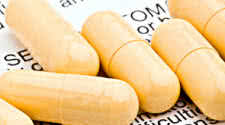Sports & Drugs Side-Effects: Alcohol, Caffeine and the Bodybuilder

Understanding the difference between use and abuse is critical
Alcohol: The Jock Juice of American Athletes - Up to 90 percent of adults consume alcohol. For many Americans it is standard
procedure to go Out to the local watering hole and have a few beers after a softball game or some other form of sport.
Athletes, certainly, are no strangers to alcohol in its many guises.
Immediately after an intense bout of exercise, athletes need to drink a few glasses of water to replace fluids and then
consume 200 to 400 calories of carbohydrates to restore glycogen and facilitate workout recovery. Many are under the mistaken
impression that consuming beer is a good way to do both. Since it is liquid, they argue, it replaces all the water they lost.
Being a source of carbohydrates, it is claimed to provide a good means of restoring pre-exercise levels of glycogen. This
reasoning, however, is a sorry miscalculation.
Beer does contain carbohydrates - as well as water, alcohol, electrolytes, minerals, protein and fat but it is a poor source
of carbohydrates. A 12-ounce beer contains around 150 calories, of which approximately only one-third (13 grams) are
carbohydrates. (Light beers have even less carbohydrates, only about 5 grams.) The remaining two- thirds of the calories are
roughly from alcohol. In contrast, 12 ounces of orange - juice has 39 grams of carbohydrates, and the same amount of apple
juice has 46 grams. To restore all the carbohydrates following a strenuous workout with beer, athletes would have to drink
from four to eight bottles (48 to 96 ounces). The same amount of carbohydrates can be obtained by taking in 16 to 30 ounces
of orange juice or 14 to 26 ounces of apple juice. Juices are also great sources of vitamin C, a proven antioxidant.
Furthermore, alcohol has a pronounced diuretic effect on the kidneys, especially when people consume large quantities. Since
the very first thing an athlete needs to do after exercising intensely is rehydrate plentifully, alcohol should be avoided.
Drinking beer is not a good way to restore water and glycogen after training.
Large amounts of alcohol may also reduce exercise ability. Along with increasing dieresis, alcohol impairs motor coordination
and aerobic capacity (through dehydration and increased lactic acid buildup), lowers muscle glycogen levels, and inhibits the
body's ability to maintain a stable temperature in cold weather. At the psychological level excess alcohol leads to depression
and hypersensitivity to external conditions, as well as attention, memory and problem-solving impairment. Impairment is
generally related to the blood- alcohol level and the dose.
Though it has about seven calories per gram, alcohol is grossly inefficient as an energy source. Approximately one ounce
of alcohol per hour can be converted to glucose - a very slow conversion ratio. Consequently, it stays in the body for a
long time and its adverse effects linger until it passes through the system. Small doses of alcohol can temporarily weaken
left-ventricle contraction. Acute ingestion can cause myocardial irritation such as arrhythmias, and can even be fatal.
Alcohol ingestion may also bring on exercise-induced asthma and increase the likelihood of infections in the upper respiratory
tract. The aerobic effects of alcohol are believed to be greater than the anaerobic effects. In a study of rugby players,
hangovers had a significantly negative effect on aerobic performance but not anaerobic performance.
Athletes wanting to get the most from their skills should steer clear of anything more than an occasional drink or two.
Moderate to excessive consumption is more of a bane than a benefit. Consequently, they should stay with fruit juices,
glycose-polymer drinks, and water to replace fluids and prevent dehydration.
Caffeine: The Truth Behind the Untruths - Coffee is an often maligned and seldom understood beverage. It has been hastily
linked to heart disease, increased incidence of cancer, and high blood pressure, among other ailments. However, none of these
putative casual links has passed the test of careful, controlled study.
For years people have been using coffee as a stimulant. It is believed to elicit psychological and physiological results which
are transferable into improved athletic performance. Yet reports of studies are contradictory. Currently caffeine, taken in
doses of about six cups of coffee in a shod period of time, is listed as a banned substance by the International Olympic Committee.
There is mounting evidence that caffeine is an ergogenic aid for some types of activities. Caffeine improves prolonged endurance
performance, and in the shod term intense exercises seems to be enhanced. It also facilitates conditioning rate, greater vigilance
in children (and in most adults), but impairs short-term memory recall. (Buysse, 256-8) As for its effect on other types of
activities requiring intermittent or quick explosive movements, decision.
Physiologically, caffeine stimulates the central nervous system and increases the release of adrenalin. It is also a diuretic
and increases body temperature. Metabolically it is believed by some to improve fat-burning capacity because it spares glycogen
stores.
In spite of the bad rap given to caffeine by many nutritionists and doctors, the truth is that none of the seriously deleterious
effects referred to have been unequivocally shown. Furthermore, controlled studies have convincingly indicated athletes can
derive benefits from a managed intake of caffeine. Habitual caffeine use does not seem to significantly lessen the ergogenic
affect athlete's experience. Too much, however, may lead to increased irritability and nervousness, thereby impairing athletic
performance. Concerning the diuretic affect of large amounts of caffeine, recent studies report dehydration no greater when
caffeine is ingested prior to exercise.
When using caffeine to aid performance, athletes should exercise moderation - avoid excessive consumption. Used judiciously,
it may effect performance enhancement for certain types of activity. Excessive use may produce effects that are negligible or
possibly harmful.